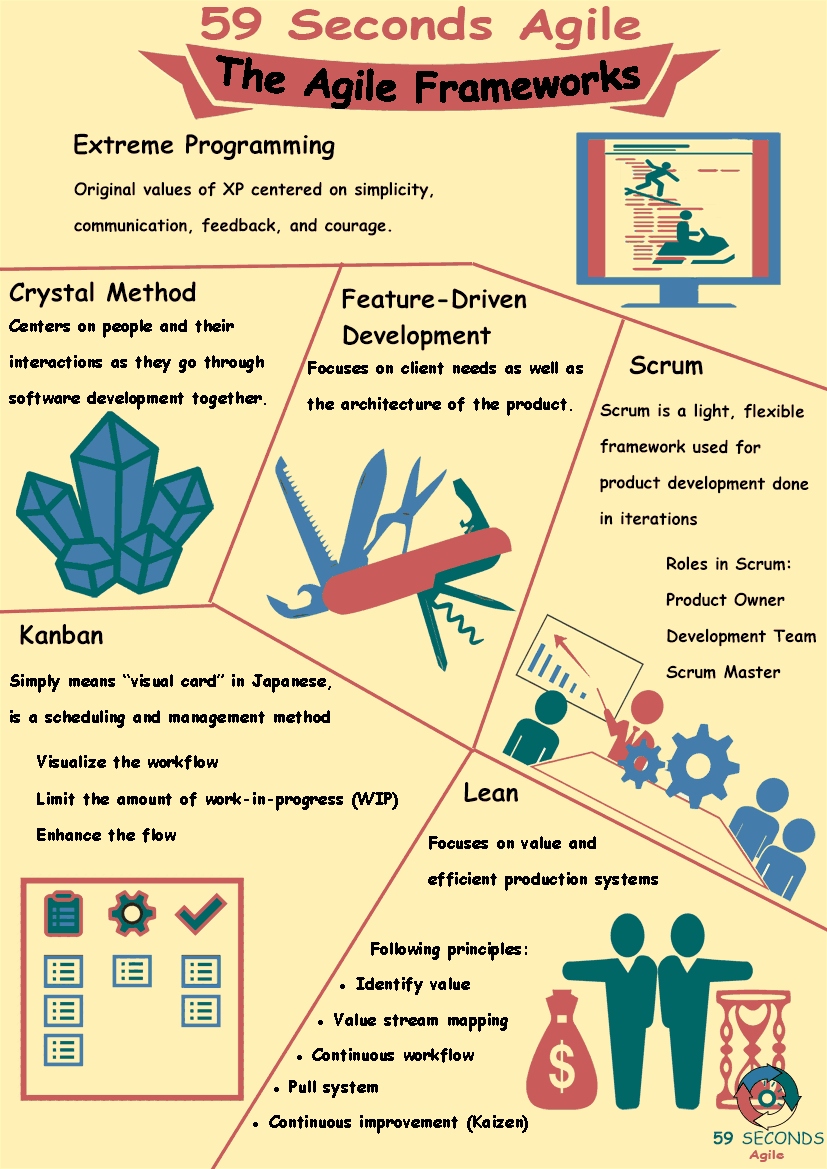Scrum Projects
A 59 Seconds Agile Training Video
Continue to Part 5 Below
Scrum Projects
A 59 Seconds Agile Article
This article provides an ‘Introduction to Scrum Projects’ and looks to discuss the metrics used for measuring project progress.
Scrum Projects
How progress is measured in a Scrum Project. In scrum project, progress is measured periodically within the project and Working Software is the primary measure of progress. In measuring the progress in a Scrum Project, it is important to know the What, When and How. The aim is to deliver a working product to the customer in the shortest possible time.
To achieve the goal, there are key processes in a Scrum Project that enable the team to measure progress and ensuring working software at any timeline of the project.
What is measured?
First, is measuring the team’s accomplishment for the last 24 hours. The first process of measuring progress is by sharing the team’s accomplishment for the last 24 hours, what they plan to do today and what obstacles they encountered are discussed during the daily Scrum or Stand-up face to face meeting. This meeting takes no more than 15 minutes and is held at the same time and place.
The Product Owner may be present as an observer and the Scrum Master is there as an active listener, ensuring that the meeting does not overrun and noting any obstacles to be removed. How the Daily Scrum ensures that the software to be delivered is working and meets the need of the customer?
It is said that the Daily Scrum is the best method for delivering information to and within the project development team. This will provide a means for solving problems swiftly and the team will have more time to work on the project.
The result will be a high-quality product which is acceptable by the owner. Progress is reviewed through the burn down chart that is accessible by the project team members.
The second measure of progress is how much work was done during the sprint and the working software. The process is done during the Sprint Review. It is a “show and tell” meeting open to all, where the team explains what they accomplished during the Sprint and what the finished product does. The finished product is evaluated according to the acceptance criteria identified when the user story was originally documented.
Continue Reading —> Next
The Agile Development Frameworks
A 59 Seconds Agile Video Animation
Continue Reading —> Next
User Stories Applied
A 59 Seconds Agile Book Review
User Stories Applied by Mike Cohn is one of our favourite books on Agile User Stories. The book starts with an overview into user stories, and details what a user story is and the different aspects of them. He then discusses how to go about writing a user story, and provides details of the INVEST criteria that can be used to determine if the story is meeting all of its objectives. Next Mike gives an in depth discussion of who user stories are written for and where to begin when gathering the details for them. The book then discusses acceptance testing user stories, including how to go about specifying these criteria and the responsibilities of the development team and customers during this process.
Continue Reading —> Next
The Agile Frameworks
A 59 Seconds Agile Infographic

Continue Reading —> Next
Agile Scrum Master Training Course
Our Favourite Agile Books
We found these books great for finding out more information on Agile Scrum:
Continue Reading —> Next


